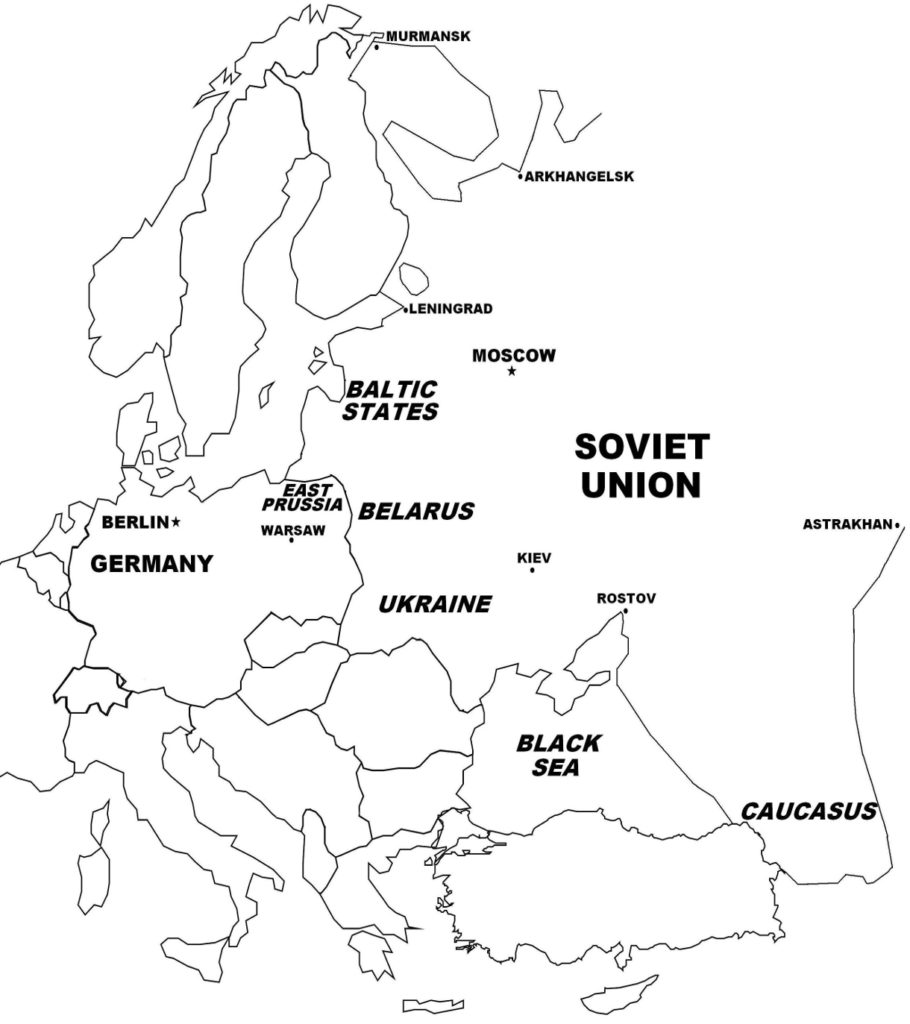On June 27, 1941, German Army Group Center captured Bialystok from Soviet forces during the early stages of the invasion of the Soviet Union under the general offensive codenamed Operation Barbarossa. Bialystok, a Polish city, had come under Soviet control as a result of the 1939 Treaty of Non-aggression between Germany and the USSR, commonly known as the Molotov–Ribbentrop Pact. The German attack was part of the broader offensive for Army Group Center to advance to the Belarusian capital of Minsk.

(Excerpts taken from Wars of the 20th Century: Volume 6 – World War II in Europe)
Operation Barbarossa By mid-June 1941, the Axis forces for Operation Barbarossa were set in place, a total of some three million German (comprising 75% of the Wehrmacht) and 700,000 other Axis troops, supported with 3,300 tanks, 7,200 artillery pieces, 2,800 planes, 600,000 motor transports, and 700,000 horses, which comprised the greatest invasion force in history. This force was divided into three main bodies and their respective objectives: Army Group North, which was to advance from East Prussia toward the Baltic States and into northern Russia for its final objective, Leningrad, where it would link up with its ally, the Finnish Army; Army Group Center (constituting the main attack with the most air and armored units) would launch from Poland toward Belorussia and central Russia for its objective, Moscow; and Army Group South, which would thrust from two points, southern Poland and Romania toward the Ukraine and southern Russia and then into the Caucasus. A secondary German offensive would be made in northern Scandinavia by Army Norway for the far-north Soviet Murmansk region.
Central Sector Also on June 22, 1941, German Army Group Center (with 1.3 million troops, 2,600 tanks, and 7,800 artillery pieces) based in Poland attacked into Soviet-occupied eastern Poland, where the uneven border arising from the 1939 partition of the country created salients whose weak flanks could be exploited by an invading force. German Army Group Center had the greatest concentration of tanks comprising two panzer groups, as Hitler anticipated that this sector’s campaign into Moscow would be strongly resisted by the Red Army. To exploit the Soviet salient at Bialystok, the two panzer groups crossed the frontier in a flanking maneuver, with the 2nd Panzer Group to the south and bypassing Brest, and 3rd Panzer Group to the north advancing for Vilnius, with both groups aiming for Minsk, 400 miles to the east. Meanwhile, German Army Group Center’s three field armies also advanced north and south of the Bialystok salient, forming another set of pincers.
On June 23, 1941, a Red Army counter-attack was stopped. The next day, another Soviet counter-offensive, led by an armored force of over 1,000 tanks, advanced for Grodno to break the looming encirclement, but met disaster caused as much by fierce German air attacks as by mechanical breakdowns of the tanks and shortage of fuel. Another Soviet attack with 200 tanks on June 25 also ended in failure.
On June 27, 1941, the German 2nd and 3rd Panzer Groups met up at Minsk, and the next day, German Army Group Center’s second pincers closed shut east of Bialystok. The trapped Soviet forces at Bialystok, Navahrudak, and Minsk continued to resist, while elimination of these pockets by the Wehrmacht was delayed by lack of adequate German motor transports to hasten the advance of infantry units. Full encirclement of Soviet forces also was compromised as the German 2nd Panzer, which was led by General Heinz Guderian (an advocate of armored blitzkrieg tactics), continued advancing east in contravention of Hitler’s pause order, which left gaps in the cordon that allowed Soviet units to escape. In the end, in the Bialystok-Minsk battles, although the Germans captured 300,000 Soviet troops, as well as 3,000 tanks, and 1,500 artillery pieces, some 250,000 Red Army soldiers escaped.
An annoyed Hitler faulted the panzer commanders for achieving only a partial capture of the trapped Soviets; in turn, the German commanders blamed the slow advance of the supporting infantry units. But in the aftermath, the Soviet Western Front was destroyed, with two field armies obliterated and three others severely incapacitated.
German Army Group Center then continued east toward Smolensk, which commanded the road to Moscow. The German advance was again spearheaded by panzers, with 2nd Panzer Group advancing in the south and 3rd Panzer Group in the north with the aim of meeting up and encircling Smolensk. On Stalin’s orders, five Soviet armies from the strategic reserve were deployed in Smolensk, reinforcing the Soviet 13th Army there in essentially reconstituting the Soviet Western Front. The Soviets formed a new defensive line around the city, and also took up positions along the old Stalin Line along the Dnieper and Dvina rivers.
On July 6, 1941, Soviet armored units, comprising 1,500 tanks, attacked toward Lepiel, but were repulsed and nearly wiped out by a German tank and anti-tank counter-attack. Then on July 11 and the following days, the Red Army launched more counter-attacks, which all failed to stall the Germans. On July 13, German 2nd Panzer Group took Mogilev, trapping several Soviet armies. Two days later, the Germans entered Smolensk, leading to fierce house-to-house fighting in the city. German 3rd Panzer Group, advancing from the north, was stalled by swampy terrain that was exacerbated by the seasonal rains. But in late July 1941, it too entered Smolensk, and the two panzer groups closed shut and trapped three Soviet armies comprising 300,000 troops and 3,200 tanks. As well, the Soviets suffered 180,000 troops killed and 170,000 wounded. German infantry units again were delayed in closing the gap with the panzer spearheads, which allowed large numbers of Soviet troops to escape to the east.
